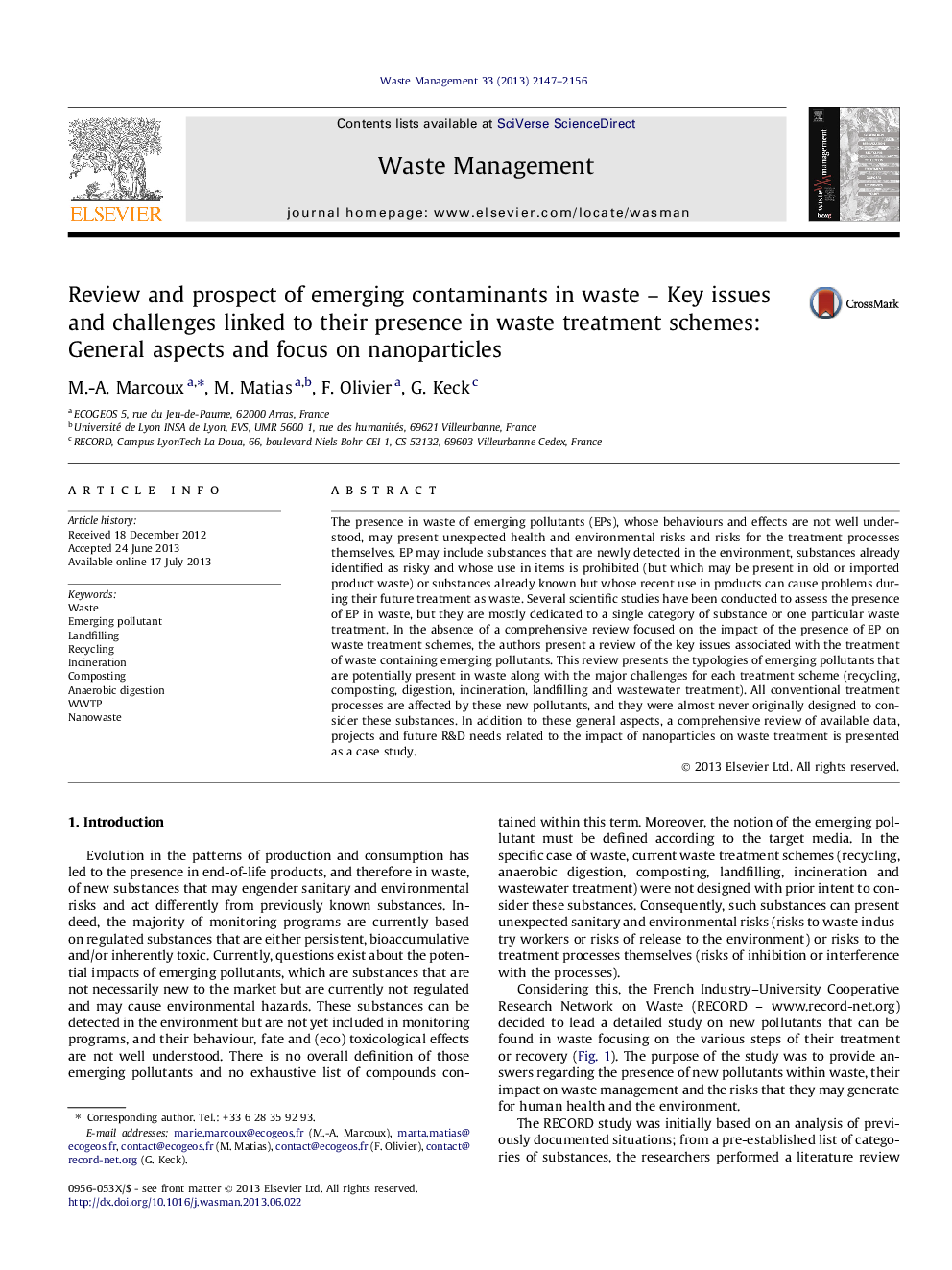| Article ID | Journal | Published Year | Pages | File Type |
|---|---|---|---|---|
| 4471695 | Waste Management | 2013 | 10 Pages |
•All conventional waste treatment processes are affected by emerging pollutants.•The major issues and challenges for each treatment scheme are presented.•A review of the impact of nanoparticles on waste treatment is given as a case study.
The presence in waste of emerging pollutants (EPs), whose behaviours and effects are not well understood, may present unexpected health and environmental risks and risks for the treatment processes themselves. EP may include substances that are newly detected in the environment, substances already identified as risky and whose use in items is prohibited (but which may be present in old or imported product waste) or substances already known but whose recent use in products can cause problems during their future treatment as waste. Several scientific studies have been conducted to assess the presence of EP in waste, but they are mostly dedicated to a single category of substance or one particular waste treatment. In the absence of a comprehensive review focused on the impact of the presence of EP on waste treatment schemes, the authors present a review of the key issues associated with the treatment of waste containing emerging pollutants. This review presents the typologies of emerging pollutants that are potentially present in waste along with the major challenges for each treatment scheme (recycling, composting, digestion, incineration, landfilling and wastewater treatment). All conventional treatment processes are affected by these new pollutants, and they were almost never originally designed to consider these substances. In addition to these general aspects, a comprehensive review of available data, projects and future R&D needs related to the impact of nanoparticles on waste treatment is presented as a case study.
